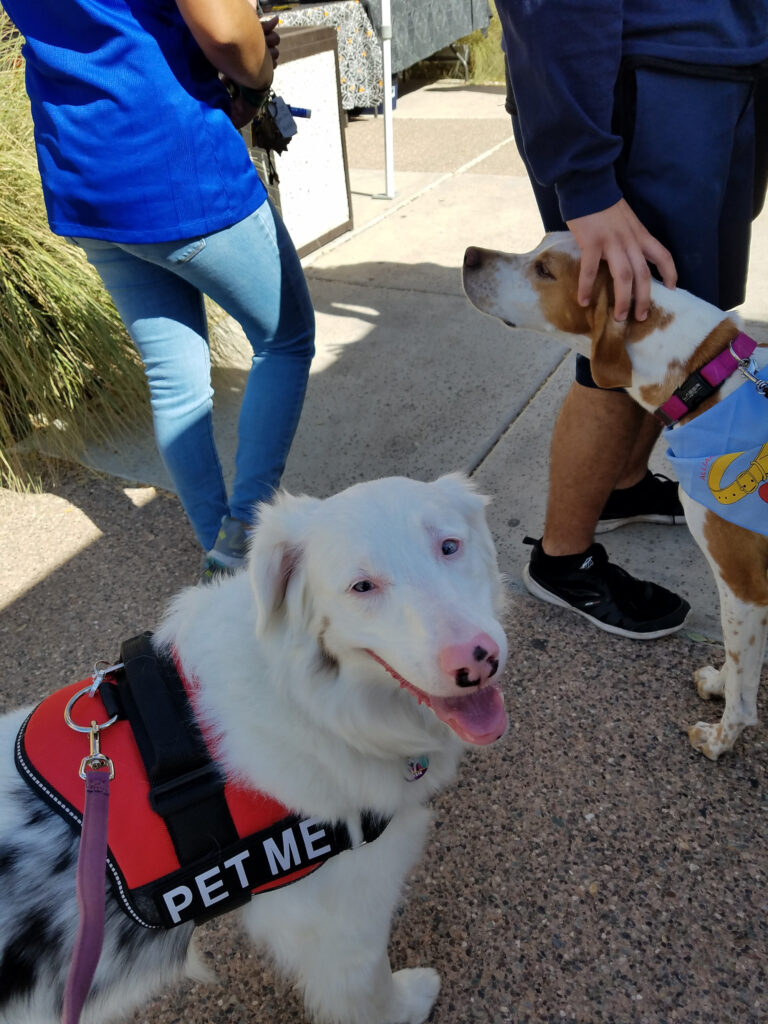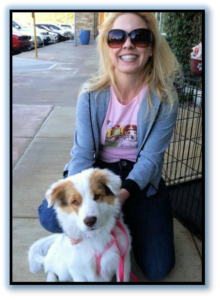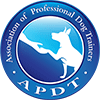 What is Pet Therapy?
What is Pet Therapy?
Pet Therapy Teams are comprised of a Handler and their dog working together to offer individuals comfort, relieve anxiety, be a good distraction, and help to make their day a bit brighter. Pet Therapy can lower anxiety, reduce loneliness, improve mental functioning and increase physical activity.
Different Types of Pet Therapy
There are different types of Pet Therapy that teams can get involved with.
- Clinical Pet Therapy generally involves teams visiting people recovering from injury, surgery, trauma, mental health issues. They tend to visit places like; hospitals, nursing homes, memory care, rehabilitation centers and hospice.
- Non-Clinical Pet Therapy Teams still provide comfort, anxiety relief, and promote well-being but visit places instead like; Schools, Libraries, Airports, Call Centers and even Disaster/Crisis events that occur.
Regardless of what type of therapy you are providing, each situation will be different so you would act accordingly to the needs of the individuals. You are there as a team to share your dog.
Pet Therapy Dogs are only allowed in places where Therapy Dogs have been requested or approved by each facility or center. Please remember, Therapy Dogs are not Service Dogs and do not have the same privileges.
Becoming a Pet Therapy Team
To become a Pet Therapy team, you need to have a good relationship with your dog.
Your dog needs to be well mannered and well behaved. Both you and your dog need to have the right temperament and desire to do therapy work.
You will be the head of the team for you and your dog. You lead the way, set the tone and provide safe interactions with the individuals you meet during your therapy visits.
For clinical settings, your dog will need to be ok with things passing by such as; wheel chairs, walkers, canes, rolling beds and medical equipment carts. Sudden movement and noises should not bother your dog either. If sirens or codes are called out over loud-speakers during visits your dog should not be reactive. If a tray is dropped or persons rushing past occur your dog should stay right by your side and not want to dart or run. It will be important to make sure you know how your dog reacts to things.
You also want to make sure your dog knows “leave it”. Your dog should not pick up food, trash or possibly even medication that has fallen on the ground.
Example of Pet Therapy Work
An example of non-clinical therapy work might be for an Airport. In this setting, your dog will need to be ok with parking structures, elevators, moving sidewalks, luggage carriers and luggage carts. Loud sounds occur in the airport, carts rushing by, people running, kids can be loose and moving about. Your dog will need to stick by your side and follow your lead always. Visiting passengers and mingling with airport visitors is the main goal when doing Airport therapy dog visits. Your dog will be petted from people standing, sitting, and even some people may be sitting on the floor as you approach.
What To Consider Before Starting Pet Therapy Work
- Taking a class to find out your dog’s level of interest in meeting and greeting people, reactions to noises, smells and other forms of movement.
- Determining your dog’s current obedience level would be a good place to start before considering any kind of Therapy Dog Work.
- A Therapy Dog class can give you and your dog the skills you need to safely interact with individuals in many different situations to become a great working team.
Julie Brewer, Tester/Observer/Handler ~ Sharing Smiles and Joy! ~ Alliance of Therapy Dogs





Leave a Reply